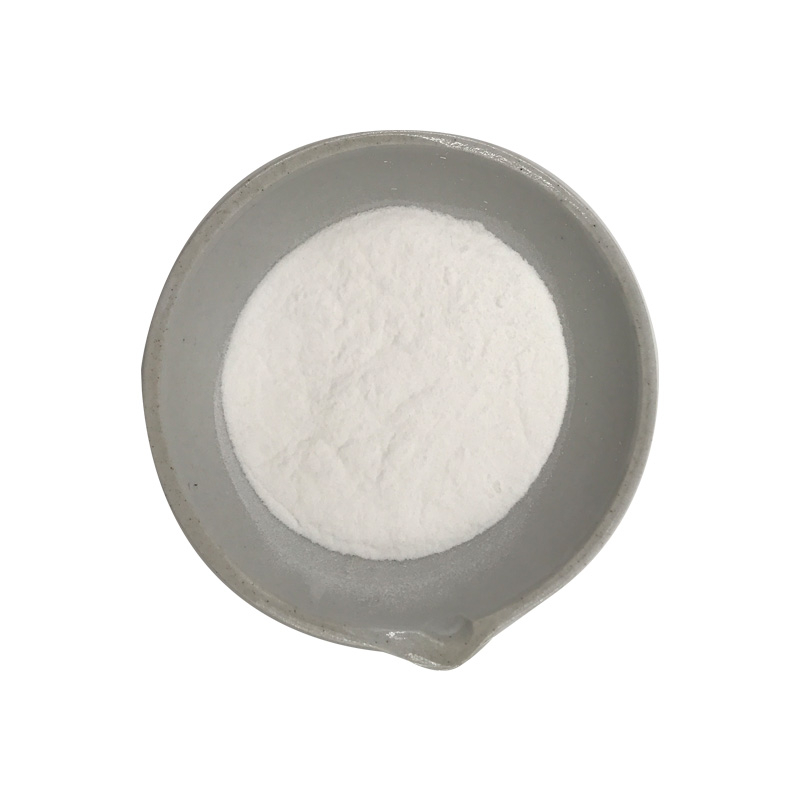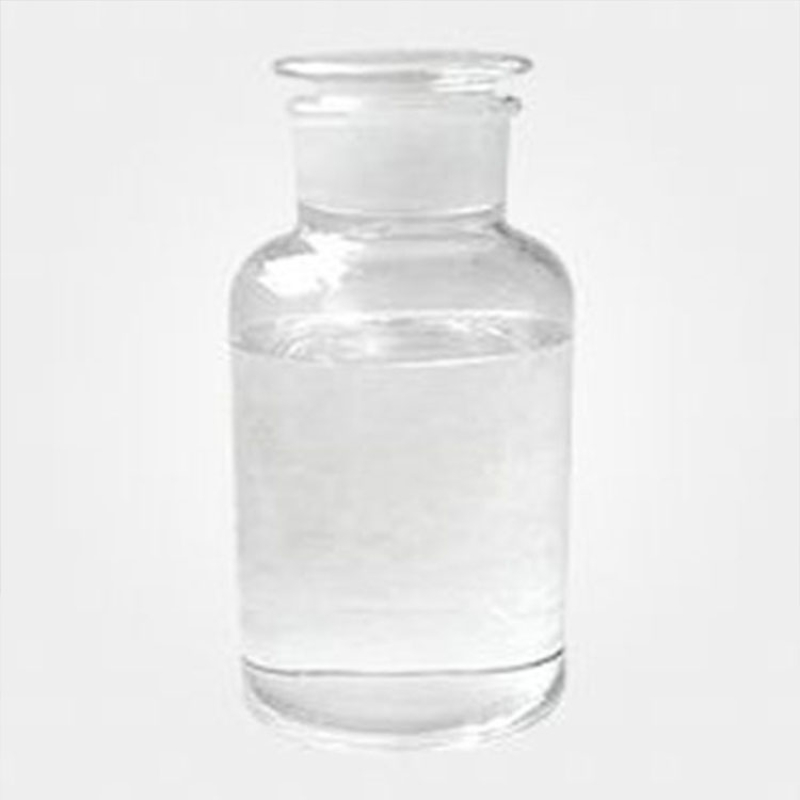Products Description of 6,7-Dimethoxyquinazoline-2,4-dione CAS#28888-44-06,7-Dimethoxy-2,4-quinazolinedione (doxazosin EP impurity D) is a chemical crystalline compound with a melting point of >300°C, an intermediate of prazosin hydrochloride.6,7-Dimethoxyquinazoline-2,4-dione Chemical PropertiesMelting point >300 °C (lit.)Boiling point 363.37°C (rough estimate)density 1.3404 (rough estimate)refractive index 1.6300 (estimate)storage temp. 2-8°Csolubility Aqueous Acid (Sparingly)pka10.27±0.20(Predicted)color White to Off-WhiteWater Solubility i
Contact Now
Products Description of 2-Amino-5-Methyl-3-Thiophenecarbonitrile CAS#138564-58-6An impurity generated in the preparation of Olanzapine.2-Amino-5-Methyl-3-Thiophenecarbonitrile Chemical PropertiesMelting point 101-103°CBoiling point 318.5±42.0 °C(Predicted)density 1.26±0.1 g/cm3(Predicted)storage temp. under inert gas (nitrogen or Argon) at 2–8 °Csolubility soluble in Methanolform powder to crystalpka0.16±0.10(Predicted)color Light yellow to BrownInChIKeyYGXADLPRHBRTPG-UHFFFAOYSA-NCAS DataBase Reference138564-58-6(CAS DataBase Reference)Safety Information
Contact Now
Products Description of Tetraethylammonium hydroxide CAS#77-98-5Tetraethylammonium hydroxide is an organic quaternary ammonium base. Most products exist in the form of methanol and aqueous solution. It is a colorless to light yellow liquid at room temperature. It has strong alkalinity and can absorb carbon dioxide in the air and decompose upon heating. It has a wide range of uses in the field of industrial research. It is used as a phase transfer catalyst, a template for molecular sieve synthesis, a cleaning agent, and a de-impurity agent in the petroleum industry.
Contact Now
Products Description of SODIUM TRISILICATE CAS#13870-30-9Sodium silicate is a water-soluble silicate, which can be divided into three forms: solid, liquid, and water-quenched. In theory, this type of substance is called "colloid". Industrial solid sodium silicate is a colorless, slightly light blue, turquoise, sky blue or yellow-green transparent or translucent glass block. When the impurity content is very low, the glassy anhydrous solid sodium silicate is a colorless and transparent glass body, and pure solid sodium cinnamate is a colorless and transparent solid.
Contact Now
Products Description of Dextrin CAS#9004-53-9White amorphous powder, odorless, slightly sweet taste.Dextrin Chemical PropertiesMelting point 53.75-54 °Cdensity 0.8 g/cm3storage temp. Store at RT.solubility H2O: 0.1 g/mL hot, complete, yellow to very deep yellowform powdercolor yellowOdorodorlessWater Solubility Soluble in hot water (0.1 g/ml).Sensitive HygroscopicMerck 14,2953Dielectric constant2.2(Ambient)Stability:Stable. Combustible.
Contact Now
Products Description of Pentaerythritol triacrylate CAS#3524-68-3For photosensitive filmPentaerythritol triacrylate Chemical PropertiesMelting point 15℃Boiling point 359.71°C (rough estimate)density 1.18 g/mL at 25 °C (lit.)refractive index n20/D 1.483(lit.)Fp >230 °Fstorage temp. Inert atmosphere,Room Temperaturesolubility Chloroform (Slightly), Methanol (Slightly)pka13.63±0.10(Predicted)form Liquidcolor ColorlessSpecific Gravity1.16-1.19Water Solubility Immiscible with water.Sensitive HygroscopicBRN 6598752Stabilit
Contact Now
Products Description of CARAMEL CAS#8028-89-5Caramel color is one of the food colorings with the longest history of human use. It is also the most widely used and popular food additive currently used by people. It has high color rate and strong coloring ability, reflecting the unique reddish brown color of fermented soy sauce, which is ruddy and bright. It has moderate viscosity, good solubility, high salt tolerance and stable quality.CARAMEL Chemical Propertiesdensity 1.35 g/cm3FEMA 2235 | CARAMEL COLOROdorat 100.00 %.
Contact Now
Products Description of SILICA CAS#10279-57-9Used as filler for paints and coatings, rubber reinforcing agent, plastic tackifier and thixotropic agent, thickener for synthetic grease and silicone greaseSILICA Chemical PropertiesMelting point 1610 °C(lit.)Boiling point >100 °C(lit.)density 2.6 g/mL at 25 °C(lit.)refractive index n20/D 1.544(lit.)storage temp. no restrictions.form tablets (~0.5 g each)Water Solubility Insoluble in water.Exposure limitsNIOSH: IDLH 3000 mg/m3; TWA 6 mg/m3EPA Substance Registry SystemSilica, h
Contact Now
Products Description of Tin sulfate CAS#7488-55-3White or light yellow crystalline powder. Soluble in water, solubility 33g/100ml water at 35℃. Soluble in dilute sulfuric acid.Stannous sulfate Chemical PropertiesMelting point 360 °Cdensity 4,15 g/cm3vapor pressure 0Pa at 20℃storage temp. no restrictions.form SolidSpecific Gravity1.35color White to off-whitePH1.6 (50g/l, H2O, 20℃)Water Solubility 330 g/L (20 ºC)Merck 14,8790Exposure limitsACGIH: TWA 2 mg/m3NIOSH: IDLH 100 mg/m3; TWA 2 mg/m3Stability:Stable, but moisture sensitive.
Contact Now
Products Description of Tetrabutylammonium Perchlorate CAS#1923-70-2Tetrabutylammonium perchlorate is used as a research compound, in medicine, and as an electrolyte in electrochemical gradeTetrabutylammonium perchlorate Chemical PropertiesMelting point 211-215 °Cdensity 1.0387 (rough estimate)refractive index 1.6800 (estimate)solubility acetonitrile: 0.1 g/mL, clear, colorlessform Crystalline Powdercolor WhiteWater Solubility Soluble in acetonitrile and ethanol.
Contact Now
Products Description of Octadecanethiol CAS#2885-00-9Octadecanethiol, molecular formula C18H38S.Octadecanethiol Chemical PropertiesMelting point 30-33 °C(lit.)Boiling point 204-210 °C11 mm Hg(lit.)density 0.847 g/mL at 25 °C(lit.)vapor pressure <0.5 hPa (20 °C)refractive index n20/D 1.3610Fp 55 °Fstorage temp. Store below +30°C.form Crystalline Solidpka10.49±0.10(Predicted)Specific Gravity0.832 (30℃)0.847color WhiteWater Solubility InsolubleBRN 1811934Exposure limitsNIOSH: Ceiling 0.5 ppm(5.9
Contact Now
Products Description of BISMUTH SULFIDECAS#1345-07-9Bismuth sulfide is brown-yellow powder or crystal, with a specific gravity of 7.39. It decomposes at 685℃. It is insoluble in water and ethyl acetate, but soluble in nitric acid and hydrochloric acid.BISMUTH SULFIDE Chemical PropertiesMelting point 685°C (dec.)density 7.7 g/mL at 25 °C(lit.)solubility insoluble in H2O; soluble in acid solutionsform LumpSpecific Gravity7.7color GrayWater Solubility Insoluble in water.
Contact Now
Products Description of Sodium mercaptobenzothiazole CAS#2492-26-4Sodium 2-Mercaptobenzothiazole is a compound with a molecular weight of 189.22 and a molecular formula of C7H4NNAS2.Sodium mercaptobenzothiazole Chemical PropertiesMelting point -6 °CBoiling point 103 °Cdensity 1,255 g/cm3vapor pressure 0Pa at 25℃storage temp. under inert gas (nitrogen or Argon) at 2-8°Cform liquidcolor White to Orange to GreenWater Solubility >=10 g/100 mL at 20 ºCCAS DataBase Reference2492-26-4(CAS DataBase Reference)EPA Substance Registry SystemSodium mercaptobe
Contact Now
Products Description of Polyisobutylene CAS#9003-27-4Ammonium Chloride (CAS#12125-02-9) is a white crystalline salt that is highly soluble in water, with a solubility of 37.2 g/100 g at 20°C. It is a crucial component in agricultural fertilizers, providing essential nitrogen for plant growth. This compound is also used as a feed additive and in various industrial applications due to its versatility. In agriculture, Ammonium Chloride is valued for its ability to enhance soil fertility and promote robust plant development.
Contact Now
Products Description of Antioxidant 1330 CAS#1709-70-2Hindered phenol antioxidant 330 is a white crystalline powder with a melting point above 244°C. It is insoluble in water. Its solubility in some solutions at 18°C (g/100g solvent) is: benzene 20, dichloromethane 31.9, methylcyclohexane 1.7, methanol 0.2, isopropanol 0.1.
Contact Now
Products Description of Polymethylene polyphenyl polyisocyanate CAS#9016-87-9Brown transparent liquid with pungent odor.Polymethylene polyphenyl polyisocyanate Chemical PropertiesBoiling point 392 °C5 mm Hgdensity 1.2 g/mL at 25 °C(lit.)vapor density 8.6 (vs air)refractive index n20/D 1.634Fp >230 °Fstorage temp. Refrigerator, Under inert atmospheresolubility DMSO (Sparingly), Ethyl Acetate (Slightly), Methanol (Soluble)form Oilcolor Yellow to OrangeStability:Stable.
Contact Now
Products Description of (2S)-(+)-2,5-Dihydro-3,6-dimethoxy-2-isopropylpyrazine CAS#78342-42-4(S)-2,5-Dimethoxy-3-isopropyl-3,6-dihydropyrazine.Molecular formula: C9H16N2O2.Molecular weight: 184.24 g/mol(2S)-(+)-2,5-Dihydro-3,6-dimethoxy-2-isopropylpyrazine Chemical Propertiesalpha 102 º (c=1%, EtOH)Boiling point 245.2±33.0 °C(Predicted)density 1.028 g/mL at 20 °C (lit.)storage temp. Sealed in dry,2-8°Csolubility Chloroform (Slightly), DMSO (Slightly), Ethanol (Sparingly), Methanol (Slightly)pka3.81±0.60(Predicted)form Liquidcolor Clear colorless to pale
Contact Now
Products Description of Antioxidant 1330 CAS#1709-70-2Hindered phenol antioxidant 330 is a white crystal powder with a melting point above 244°C and is insoluble in water. The solubility (g/100g solvent) in certain solutions at 18°C is: benzene 20, methylene chloride 31.9, methylcyclohexane Alkane 1.7, methanol 0.2, isopropyl alcohol 0.1.
Contact Now
Products Description of Phosphorous acidCAS#13598-36-2Colorless crystals. Easily soluble in water and alcohol.Phosphorous acid Chemical PropertiesMelting point 73 °CBoiling point 200 °Cdensity 1.651 g/mL at 25 °C(lit.)vapor pressure 0.001Pa at 20℃Fp 200°Cstorage temp. 0-6°Csolubility DMSO (Slightly), Methanol (Slightly), Water (Sparingly)form CrystalspkapK1 1.29; pK2 6.74(at 25℃)Specific Gravity1.651color WhiteWater Solubility SOLUBLESensitive Air Sensitive & HygroscopicMerck 14,7346Stability:Stable.
Contact Now
Products Description of 3,5-Dimethylacetophenone CAS#5379-16-83,5-Dimethylacetophenone is a chemical substance with the chemical formula C10H12O and a molecular weight of 148.21.3,5-DIMETHYLACETOPHENONE Chemical PropertiesMelting point 20°CBoiling point 98-100°C 8mmdensity 0,988 g/cm3refractive index 1.5290Fp 98-100°C/8mmstorage temp. Sealed in dry,Room Temperatureform powder to lump to clear liquidcolor White or Colorless to Almost white or Almost colorlessλmax251nm(MeOH)(lit.)BRN 2240987Safety InformationSafety Statements 24/25HS Code&nb
Contact Now
Products Description of 3,4-Dibromothiophene CAS#3141-26-23,4-Dibromothiophenol is a colorless to pale yellow liquid with a boiling point of 221-222°C and a melting point of 4-5°C.3,4-Dibromothiophene Chemical PropertiesMelting point 4-5 °C (lit.)Boiling point 221-222 °C (lit.)density 2.188 g/mL at 25 °C (lit.)refractive index n20/D 1.640(lit.)Fp >230 °Fstorage temp. Keep in dark place,Sealed in dry,Room Temperatureform Liquidcolor Clear colorless to yellowSpecific Gravity2.188BRN 107642InChIKeyVGKLVWTVCUDISO-UHFFFAOYSA-NCAS DataBa
Contact Now
Products Description of 2,5-Dibromothiophene CAS#3141-27-32,5-Dibromothiophene is the light yellow transparent liquid, boiling point 211℃, melting point -6℃, relative density 2.147.2,5-Dibromothiophene Chemical PropertiesMelting point -6 °C (lit.)Boiling point 211 °C (lit.)density 2.147 g/mL at 25 °C (lit.)refractive index 1.627-1.63Fp 99 °Cstorage temp. Keep in dark place,Sealed in dry,Room Temperaturesolubility Chloroform, Methanolform Liquidcolor Clear pale yellow to brownSpecific Gravity2.147Water Solubility practically insol
Contact Now
Products Description of 3,4-Dimethoxythiophene CAS#51792-34-83,4-Dimethoxythiophene is an organic compound with the molecular formula C6H8O2S.3,4-Dimethoxythiophene Chemical PropertiesBoiling point 100-102 °C/10-11 mmHgdensity 1.209 g/mL at 25 °Crefractive index 1.5409Fp 224 ºFstorage temp. -20°Cform powder to lump to clear liquidcolor White or Colorless to YellowWater Solubility Miscible with organic solvents.
Contact Now
Products Description of Setipiprant CAS#866460-33-5White powder.Setipiprant Chemical PropertiesBoiling point 690.4±55.0 °C(Predicted)density 1.37±0.1 g/cm3(Predicted)storage temp. Store at -20°Csolubility DMSO:48.67(Max Conc. mg/mL);120.94(Max Conc. mM)DMF:50.0(Max Conc. mg/mL);124.25(Max Conc. mM)DMF:PBS (pH 7.2) (1:1):0.5(Max Conc. mg/mL);1.24(Max Conc. mM)Ethanol:3.0(Max Conc. mg/mL);7.45(Max Conc. mM)form A solidpka4.24±0.10(Predicted)Factory and Equipment ShowFast delivery timeInventory 2-3 working days New production 7-10 working days
Contact Now


































